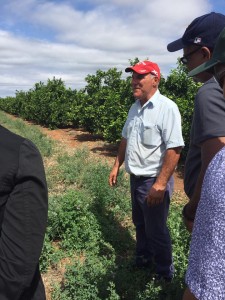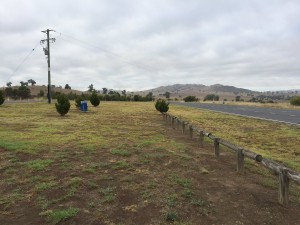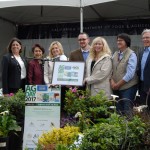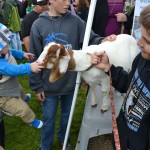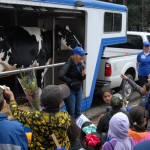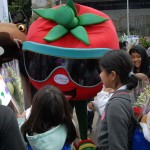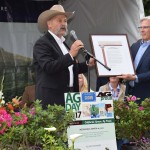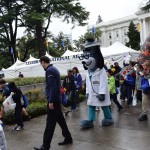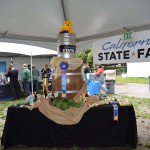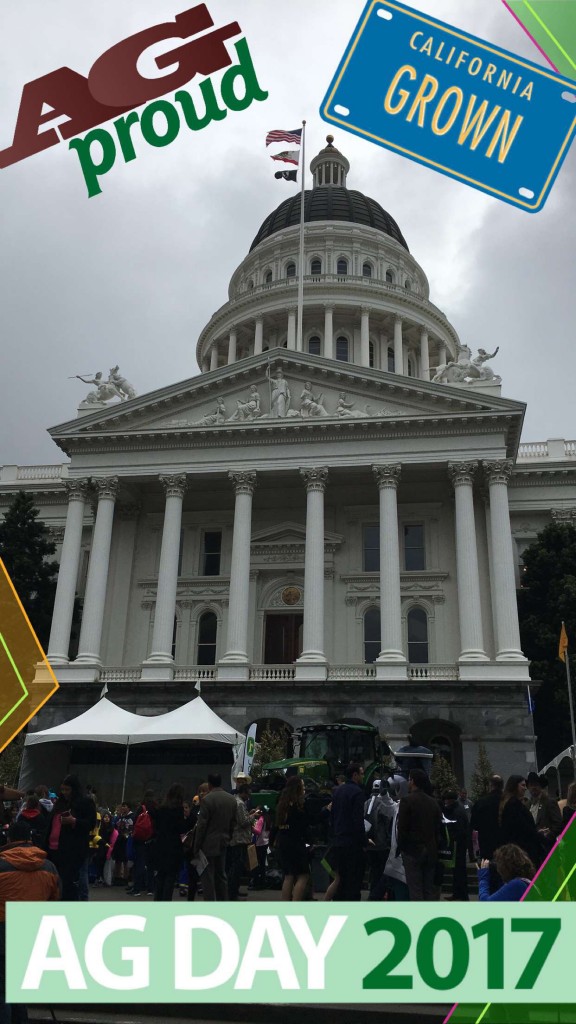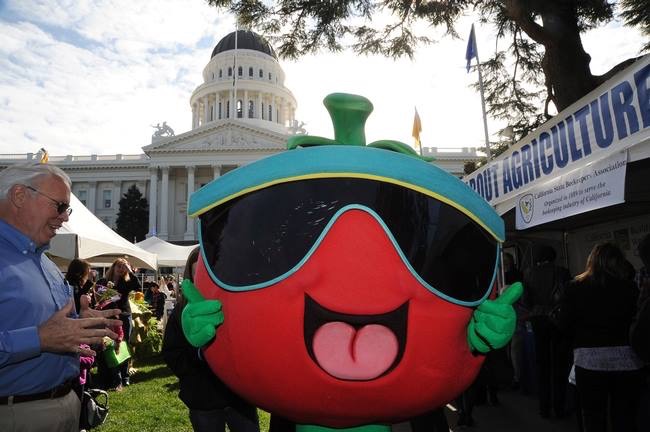-
Recent Posts
- One in nine jobs; new report reveals massive economic footprint of Fresno County farms — from the Business Journal
- Trade mission to Mexico concludes — important opportunities to connect on trade issues as well as New World Screwworm
- CDFA joins USDA trade mission to Mexico
- CDFA kicks off California State Employees Food Drive – Early!
- Agritourism – How Pumpkins are Grown in California
Recent Comments
- Micah on Secretary Ross on Water, Workforce, and the Future of California Agriculture — from AgNet West
- CA agriculture value surpasses $60B | Western Livestock Journal on Value of California Ag production tops $60 billion for first time
- Kathy de Contreras on CDFA IT department honored at “Best of California” awards
- El costo económico de las deportaciones masivas ya es visible en California - Espanol News on Nine California Counties Make Top-10 List for Ag Sales in the U.S.
- Deportations are taking a toll on California’s economy – and have only just begun – The News Beyond Detroit on Nine California Counties Make Top-10 List for Ag Sales in the U.S.
Archives
- November 2025
- October 2025
- September 2025
- August 2025
- July 2025
- June 2025
- May 2025
- April 2025
- March 2025
- February 2025
- January 2025
- December 2024
- November 2024
- October 2024
- September 2024
- August 2024
- July 2024
- June 2024
- May 2024
- April 2024
- March 2024
- February 2024
- January 2024
- December 2023
- November 2023
- October 2023
- September 2023
- August 2023
- July 2023
- June 2023
- May 2023
- April 2023
- March 2023
- February 2023
- January 2023
- December 2022
- November 2022
- October 2022
- September 2022
- August 2022
- July 2022
- June 2022
- May 2022
- April 2022
- March 2022
- February 2022
- January 2022
- December 2021
- November 2021
- October 2021
- September 2021
- August 2021
- July 2021
- June 2021
- May 2021
- April 2021
- March 2021
- February 2021
- January 2021
- December 2020
- November 2020
- October 2020
- September 2020
- August 2020
- July 2020
- June 2020
- May 2020
- April 2020
- March 2020
- February 2020
- January 2020
- December 2019
- November 2019
- October 2019
- September 2019
- August 2019
- July 2019
- June 2019
- May 2019
- April 2019
- March 2019
- February 2019
- January 2019
- December 2018
- November 2018
- October 2018
- September 2018
- August 2018
- July 2018
- June 2018
- May 2018
- April 2018
- March 2018
- February 2018
- January 2018
- December 2017
- November 2017
- October 2017
- September 2017
- August 2017
- July 2017
- June 2017
- May 2017
- April 2017
- March 2017
- February 2017
- January 2017
- December 2016
- November 2016
- October 2016
- September 2016
- August 2016
- July 2016
- June 2016
- May 2016
- April 2016
- March 2016
- February 2016
- January 2016
- December 2015
- November 2015
- October 2015
- September 2015
- August 2015
- July 2015
- June 2015
- May 2015
- April 2015
- March 2015
- February 2015
- January 2015
- December 2014
- November 2014
- October 2014
- September 2014
- August 2014
- July 2014
- June 2014
- May 2014
- April 2014
- March 2014
- February 2014
- January 2014
- December 2013
- November 2013
- October 2013
- September 2013
- August 2013
- July 2013
- June 2013
- May 2013
- April 2013
- March 2013
- February 2013
- January 2013
- December 2012
- November 2012
- October 2012
- September 2012
- August 2012
- July 2012
- June 2012
- May 2012
- April 2012
- March 2012
- February 2012
- January 2012
- December 2011
- November 2011
- October 2011
- September 2011
- August 2011
- July 2011
- June 2011
Categories
- AG Vision
- Agricultural Education
- Agricultural Marketing
- Alternative Fuels
- Animal health
- Animal Welfare
- Asian Citrus Psyllid
- Biodiversity
- Border stations
- BSE
- Cannabis
- Cannella Panel
- Climate Change
- Climate Smart Agriculture
- Community-based Food System
- Conservation
- Dairy
- Drought
- Environment
- Fairs
- Farm Bill
- Farm Labor
- Farmers' Markets
- Fertilizer
- Food Access
- Food Safety
- Food Waste
- Glassy-winged Sharpshooter
- Growing California
- Healthy soils
- HLB
- Hydrogen
- Integrated Pest Management (IPM)
- Invasive Species
- Light Brown Apple Moth
- Livestock ID
- Measurement Standards
- Nutrition
- Organic agriculture
- Pierce's Disease
- Pollinators
- Specialty Crops
- State Board of Food and Agriculture
- Succession Planning
- Trade
- Uncategorized
Pages

Wines and climate adaptation – Climate Smart Agriculture Mission to Australia
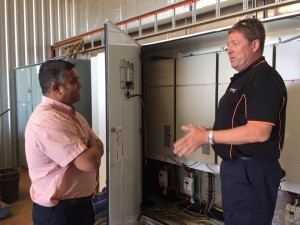
CDFA science advisor Dr. Amrith Gunasekara (left) at Casella Family Brands winery in New South Wales.
New South Wales: Our trip to Australia included a trip near the village of of Yenda, for a tour with the irrigation, energy and wastewater management team for Casella Family Brands, the owners of Yellow Tail and Peter Lehmann wines, among other labels. Yellow Tail was launched in the USA in 2001 and quickly surpassed all initial projections to become one of the world’s most recognized wines.
The family-owned winery is a leader in adopting technology in the vineyards and its processing facility. All irrigation pumps are linked by radio and cellular phone for scheduling by computer. Soil moisture probes feed into the information system every 15 minutes along with a network of weather station data. The integrated data management system requires fewer pumping hours–a 25-30 percent savings of energy use- brings reductions in greenhouse gas emissions, and it saves money! The computer system from Australia’s Right Energy Solutions was a capital investment with a fifteen-month payback!

This warehouse contains 1.5 million cases of Yellow Tail wines, about a month’s supply for customers around the world.
Recycling is a key part of this company’s culture. Raw wastewater from the winery is recycled and reused, and rainwater is reclaimed. All cardboard, plastic, oak and glass are recycled. Pomace and other solid waste from the crush are used in the extensive composting yard for the vineyards.
The winery is on the same location where John Casella’s parents started their farming venture after leaving Sicily in 1957. The original winery – a tin shack- and the family home are still there. Another amazing story of a farm family that never gave up!
We traveled back to Canberra through countryside that is mostly grazing and grain production. The wide open spaces reminded me of western Nebraska but the rolling pastures definitely could have been Amador or Calaveras county!
Posted in Uncategorized
Leave a comment
A sweet farewell – Climate Smart Agriculture Mission to Australia
New South Wales: One of our last stops in Australia was so fun – Ferrero Rocher, the world’s third largest confectionary!! Claudio Cavallini, general manager of the company’s Australian agriculture program, welcomed us to the 2,000-hectare property -a former cattle ranch being converted to hazelnut plantings. In addition to its famous namesake chocolates, Nutella is one of the company’s products.
The company sources its hazelnuts from Turkey, Italy, Chile, Argentina, the U.S., Spain, South Africa and Serbia. Australia is the latest addition to its growing sites, which are selected for climate, chill hours, soils and access to water. Diversifying sourcing locations helps manage risk and ensure the best quality and freshest hazelnuts.
Ferrero Rocher started as a family pasticceria in the Piedmont area of Italy. It is headquartered in Milan. I am impressed by its corporate commitment to responsible stewardship and its programs to foster healthy rural development in +regions where its products are sourced. The company has met its goal for sustainably-sourced palm oil and is on track to meet goals for sustainably-sourced chocolate.
The farm we visited is designed not only as a production farm but also as a research, development and demonstration site to assist growers in bringing hazelnuts to the region. It includes a nursery and an amazing deployment of technology to improve water use efficiency and reduce energy use. Compost is used extensively to get the shrubs started. Sorghum and casuarina are planted every five rows for windbreaks.
After planting has been completed later this year, the next phase of the project will be a cracking and drying facility where the company plans to deploy an aggressive clean energy strategy. The high cost of energy has been mentioned as a driver for change in all of our meetings this week.
Posted in Uncategorized
Leave a comment
Citrus Down Under – Climate Smart Agriculture Mission to Australia
New South Wales: Australian farmers grow some of the same specialty crops as we do in California, including citrus. Frank Mercuri, chairman of Pacific Fresh, hosted us for a tour of as citrus packing house and an orchard. Pacific Fresh is owned by 8 farmers and packs for another 22 growers. The co-op was established in 1997 and has quickly grown to the country’s fifth-largest. It is affiliated with Sunkist in California. Exports are critical to the Australian citrus industry. It ships 65 percent of its production overseas.
Frank told us Valencia prices are almost double this year –even for juice. This is in part due of the loss of Florida Valencia orchards to Huanglongbing, or citrus greening, the disease carried and spread by the Asian citrus psyllid. This is yet another example of how interconnected we are in the world of agriculture
In the middle of Vallerosa Orchard (named for the small Italian town where Frank’s parents were born) we had a great discussion about water, the water trading system of Australia, and how this area of New South Wales has thrived. Growers in this region had full water allocations even during the drought. Water use efficiency has increased in recent years, which has allowed growers to sell water on a short-term basis some years, making the water an asset on their balance sheets.
Here’s a member of our delegation, Emily Rooney, president of the Agricultural Council of California.
Posted in Uncategorized
Leave a comment
Impressions of a vast, dry continent – Climate Smart Agriculture Mission to Australia
New South Wales: On this day we left Canberra at 7am and traveled south and west to what is known as “irrigation country.” The scenery reminds me of a drive from Sacramento to Ione (Amador County). Our stops included a visit with representatives of Coleambally Irrigation, a farmer-owned co-op. The district encompasses 491 irrigated farms producing rice, wheat, corn, cotton, barley, soy beans, canola, and a variety of fruits and vegetables. We received an on-the-ground look at water reforms, featuring a system that runs on solar power and includes broadband communications. Water orders can be met within 2 hours and there is precise regulation of flows, precise measurement, and automated water accounting.
We saw first-hand that farmers here have embraced solutions beyond water management. LandCare is a grass-roots conservation program that partners with landholders to plant trees, foster biodiversity, capture soil moisture, and protect waterways. The program connects students, families and retirees to natural resources through community events. Cost share funding for restoration projects comes through federal and state government grants.

Representatives of LandCare provide an overview of their regional work with a map of New South Wales.
LandCare has expanded its focus to include community engagement events to address increasing mental health issues in rural farming communities. The social aspect of land stewardship is a critical component of healthy communities and shows the true value of resource management and restoration on the land.
As we continue our work in California to adapt to climate change and manage our way through a drought that, believe it or not, is still with us, there is much to learn in Australia. The country endured its own epic drought from 1995-2012 and has developed strategies for sustainability that are the reason for our visit.
Posted in Uncategorized
1 Comment
Photo highlights from #CalAgDay 2017
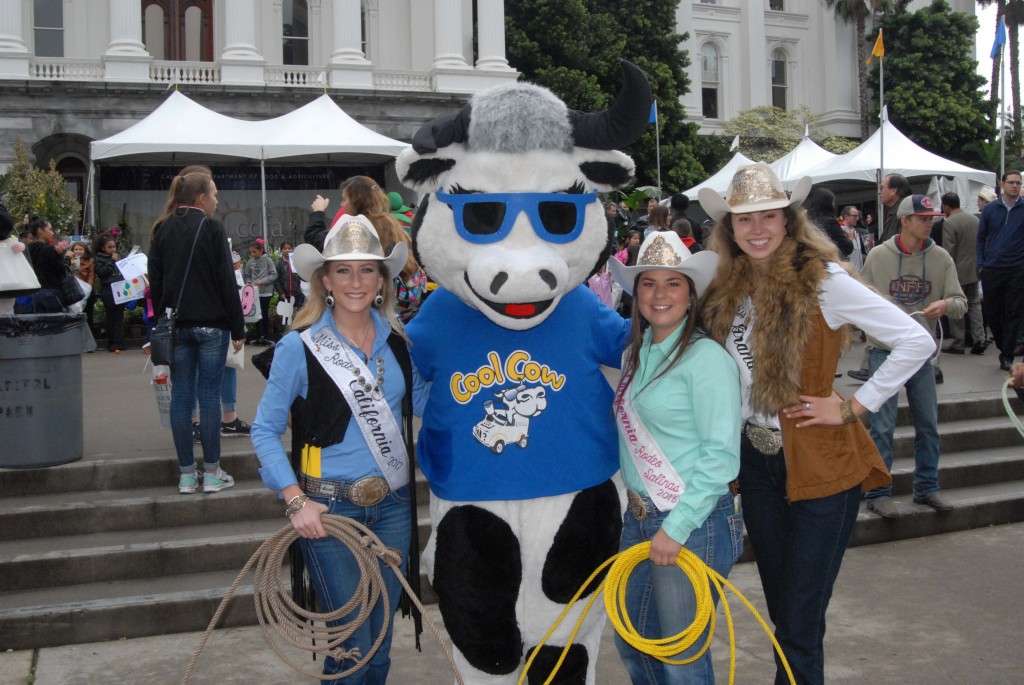
It just wouldn’t be Ag Day at the California Capitol without “Cool Cow” and our rodeo queens (from left): Brittney Phillips, Miss Rodeo California; Megan Ford, Miss California Rodeo Salinas; and Leandra Steenkamp, Miss Grand National Rodeo 2017.
- Ag Day emcee Rob Stewart, host of KVIE’s “Rob on the Road” program, kicks things off.
- California legislators braved the blustery weather and came out to enjoy Ag Day. From left: Assemblymember Cecilia Aguiar-Curry, Assembly Agriculture Committee Chair Anna Caballero, Senate Agriculture Committee Chair Cathleen Galgiani and Assemblymember Devon Mathis thanked Ag Day partners including California Women for Agriculture President Jeanette Lombardo, California Foundation for Agriculture in the Classroom Executive Director Judy Culbertson, and State Board of Food and Agriculture President Craig McNamara.
- Thanks to Rob Stewart of KVIE’s “Rob on the Road” for bringing his inimitable energy to Ag Day this year.
- California State Board of Food and Agriculture President Craig McNamara voiced his appreciation of the Golden State’s farmers and ranchers.
- Assemblymember Timothy Grayson with FFA members promoting the Cal Ag Plate license plate program supporting agricultural education programs.
- It’s not every day you get a roping lesson from a real rodeo queen! That’s Leandra Steenkamp, Miss Grand National Rodeo 2017.
- The “Blue Jackets” of FFA were everywhere at Ag Day – especially helping hand out flowers at the California State Floral Association booth.
- The California State Fair displays are a perennial Ag Day attraction.
- The California State Fair displays are a perennial Ag Day attraction.
- Myers, a highly trained detector dog with US Customs and Border Protection’s “Beagle Brigade,” is led through a demonstration by handler Danny Lee.
- Jamie Johansson, chairman of the board for the California Foundation for Agriculture in the Classroom, congratulates this year’s winning authors in the “Imagine this…” story writing competition.
- California Cattlemen’s Association President Dave Daley, Ph.D., accepts a proclamation honoring the organization’s 100th anniversary from California State Board of Food and Agriculture President Craig McNamara. The proclamation was signed by CDFA Secretary Karen Ross.
- Myers, a highly trained detector dog with US Customs and Border Protection’s “Beagle Brigade,” and handler Danny Lee greet Ag Day attendees.
- Kids carried signs reading “Fruits & Veggies for a Healthy Life!” as they participated in a health walk around the capitol building, starting with calisthenics right in the middle of Ag Day.
- The Calpaca (California Alpaca Breeders Association) booth was as popular as always.
- The California State Fair displays are a perennial Ag Day attraction.
Special thanks to Bob Laliberte and Robbie Chessey for their help with the photography this year.
Posted in Agricultural Education
Leave a comment
Climate Smart Agriculture Policy Mission – Secretary Ross and Ag delegation in Australia

Old Parliament House in Canberra, Australia. Once the seat of Parliament, it has served as a museum in recent years.
CANBERRA, the Australian capital: A number of us were late in arriving to Canberra because of weather delays while traveling. So we made a quick turnaround to join up with the rest of the delegation and our hosts for day-one of our visit, starting at the offices of the Australian agriculture ministry.
We then observed the Parliamentary “Question Time” at the Capitol building. Now that is an interesting way for members to question/challenge the prime minister and majority party about leadership policies and proposals!
As we left the building there was quite a display of military in front of the Parliament awaiting review by the prime minister. The Capitol itself is an impressive structure; it is built upon a hill overlooking a reflecting pool, the nation’s war museum, and a mall leading to a war memorial.
The afternoon of our first day ended with a fascinating meeting with staff at Australia’s Climate Change Authority and its Department of the Environment and Energy. The Authority is an independent agency established to advise the government on emissions reduction strategies. It has a nine-member board of experts, including a chief scientist. It has recently undertaken an “action on the land” research project to seek ways to better coordinate action to reduce carbon emissions, enhance the natural environment, and improve on-farm profitability.
We had a great discussion about what works and what doesn’t; Australia’s reverse credit auction process; and how to achieve/fund multiple benefits from land management practices. The California delegation peppered them with questions. I guess we were inspired by “Question Time!”
Posted in Uncategorized
1 Comment
A Farm Bill for our families
 CDFA is in the midst of preparing California’s recommendations for the 2018 Farm Bill. The Farm Bill is renewed every five years and serves as the policy guideline for food and farming in the United States. The legislation touches all of us in numerous ways, as this series of blog posts will explain in greater detail.
CDFA is in the midst of preparing California’s recommendations for the 2018 Farm Bill. The Farm Bill is renewed every five years and serves as the policy guideline for food and farming in the United States. The legislation touches all of us in numerous ways, as this series of blog posts will explain in greater detail.
The Farm Bill affects well-being of families across the country, including right here in California, by helping to facilitate access to nutritious foods. With the support of the Farm Bill, California is committed to increasing food access for our most vulnerable and food-insecure communities. According to some estimates, up-to 20 percent of Californians are at risk of food insecurity, including more than two-million children, and more than one-million residents live in “food deserts,” where they lack access to basic grocery stores stocked with fresh fruits and vegetables. As the country’s largest producer of specialty crops, we must work to change that. Two titles in the Farm Bill – Nutrition and Horticulture – are helping us reach this goal.
Nutrition
The first of these titles is Title 4, or the Nutrition title. As the largest piece of the Farm bill pie (Nutrition accounts for over 80 percent of Farm Bill spending), the Nutrition title creates the Supplemental Nutrition Assistance Program, or SNAP. SNAP is the country’s largest food safety net program, and it helps millions of American families. In California, SNAP is known as CalFresh, and it provides nearly 4.2 million Californians with benefits. This support program also stimulates the economy. According to the USDA, every dollar invested in SNAP generates $1.79 in economic activity. Alongside SNAP, the Nutrition title also provides:
- $200 million for job training to help Americans get back on their feet
- $125 million for the Healthy Food Financing Initiative to help bridge the gap between underserved communities and healthy food retailers
- $100 million in incentives to increase fresh fruit and vegetable purchases
- An additional $250 million for the Emergency Food Assistance Program to help low- income families and senior citizens access food.
Specialty Crops
Numerous studies suggest that lack of access to fresh fruits and vegetables (specialty crops) can result in negative health impacts, including higher rates of diabetes and obesity. Through the Horticulture title, Title 10, the Farm Bill provides California with the support it needs for growth in the specialty crops sector through a variety of approaches, including the creation of promotional programs.
One example of this is “California Food for California Kids: Promoting California Grown Fruits and Vegetables in Summer Meals”. This program, established through the Specialty Crop Block Grant Program(SCBGP), promotes the quality and benefits of healthy, freshly prepared meals made with California grown fruits and vegetables. Specialty crop programs receive:
- $30 million to increase the consumption of locally and regionally produced agricultural products
- $72.5 million to the SCBGP to support marketing, pest management and food safety efforts
- $11.5 to the Organic Cost Share program to assist organic producers in their certification efforts
Both of these Farm Bill titles are instrumental in ensuring that Californians as well as all Americans have access to nutritious, safe and healthy food. California is the country’s number-one producer of specialty crops. Our farmers and ranchers are committed to producing fresh fruits, nuts and vegetables that have positive impacts for our families.
Posted in Uncategorized
Leave a comment




